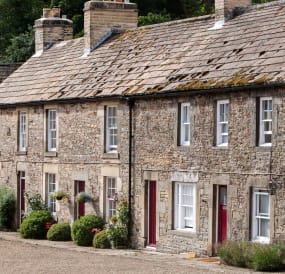History of Blanchland

1165 Walter de Bolbec gifts land for a monastery
1327 Edward III stays at Blanchland
1536-9 Dissolution of the Monasteries
1620s Ownership by the Forsters of Bamburgh
1700 Marriage of Nathaniel Lord Crewe and Dorothy Forster
1704 Sale of Forster estates to Nathaniel Lord Crewe
1715 Jacobite Rising
1721 Death of Lord Crewe; Charity is endowed with the Forster estates
1730s Repair of the village, including building a parsonage and a bridge over the river and establishing a school
1747 John Wesley preaches in the village and describes it and the Abbey as “little more than a heap of ruins”
1752 The Trustees repair Blanchland Abbey
1815 Further church repairs by the Trustees
1800s Lead mining and agricultural activity
1855 Trustees build Blanchland School (it closes in 1981)
1930 WH Auden stays at the Lord Crewe Arms
1990s Village is used for filming of Jude the Obscure and Catherine Cookson’s Gambling Man and A Dinner of Herbs
2004 White Monk Tearooms open in the old school building
2012 The Lord Crewe Arms closes for refurbishment
2014 The Lord Crewe Arms reopens under new management
You might also be interested in
The Estates
After 300 years of prudent Christian stewardship, we still own most of the estates bequeathed to the Charity on Lord Crewe's death in 1721, which generate income for our charitable outputs.
Find out more